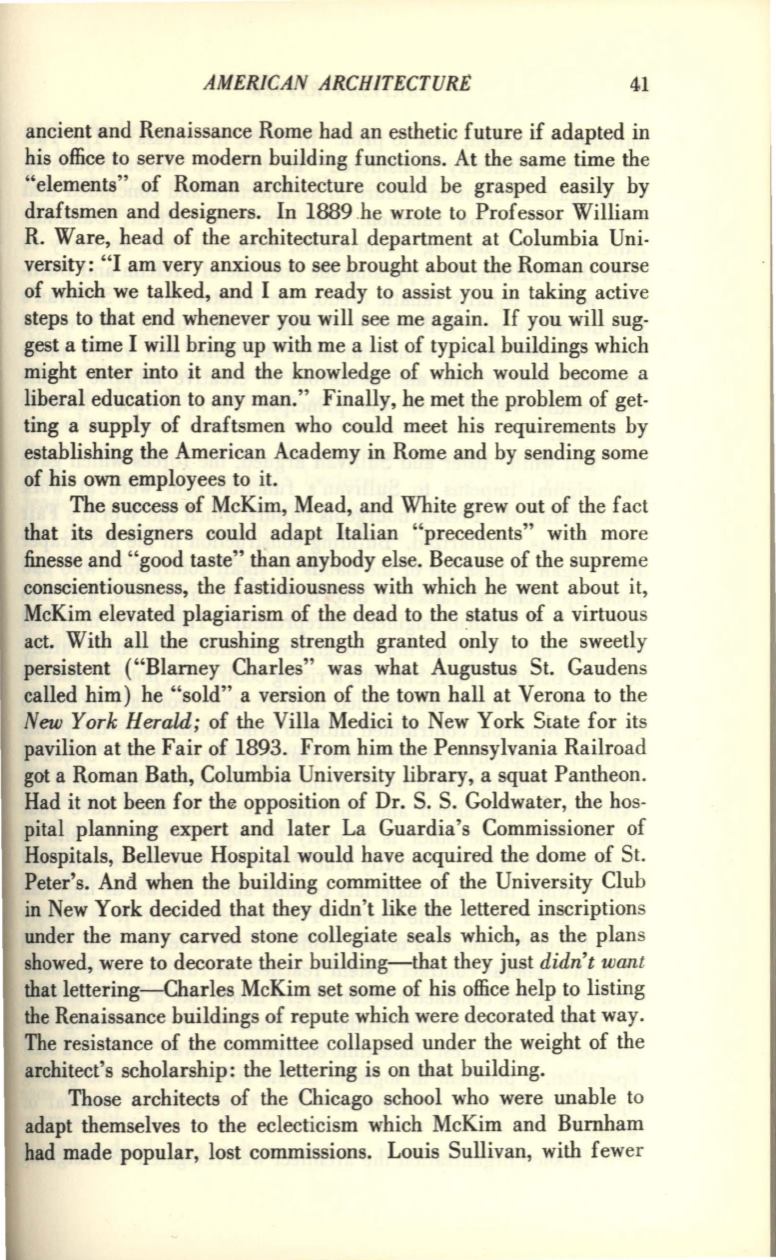
AMERICAN ARCHITECTURE
41
ancient and Renaissance Rome had an esthetic future if adapted in
his office to serve modern building functions. At the same time the
"elements" of Roman architecture could be grasped easily by
draftsmen and designers. In 1889 .he wrote to Professor William
R. Ware, head of the architectural department at Columbia Uni·
versity: "I am very anxious to see brought about the Roman course
of which we talked, and I am ready to assist you in taking active
steps to that end whenever you will see me again.
If
you will sug–
gest a time I will bring up with me a list of typical buildings which
might enter into it and the knowledge of which would become a
liberal education to any man." Finally, he met the problem of get·
ting a supply of draftsmen who could meet his requirements by
establishing the American Academy in Rome and by sending some
of his own employees to it.
The success of McKim, Mead, and White grew out of the fact
that its designers could adapt Italian "precedents" with more
finesse and "good taste" than anybody else. Because of the supreme
conscientiousness, the fastidiousness with which he went about it,
McKim elevated plagiarism of the dead to the status of a virtuous
act. With all the crushing strength granted only to the sweetly
persistent ("Blarney Charles" was what Augustus St. Gaudens
called him) he "sold" a version of the town hall at Verona to the
New York Herald;
of the Villa Medici to New York Siate for its
pavilion at the Fair of 1893. From him the Pennsylvania Railroad
got a Roman Bath, Columbia University library, a squat Pantheon.
Had it not been for the opposition of Dr. S. S. Goldwater, the hos–
pital planning expert and later La Guardia's Commissioner of
Hospitals, Bellevue Hospital would have acquired the dome of St.
Peter's. And when the building committee of the University Club
in New York decided that they didn't like the lettered inscriptions
under the many carved stone collegiate seals which, as the plans
showed, were to decorate their building-that they just
didn't want
that lettering-Charles McKim set some of his office help to listing
the Renaissance buildings of repute which were decorated that way.
The resistance of the committee collapsed under the weight of the
architect's scholarship: the lettering is on that building.
Those architects of the Chicago school who were unable to
adapt themselves to the eclecticism which McKim and Burnham
bad made popular, lost commissions. Louis Sullivan, with fewer


